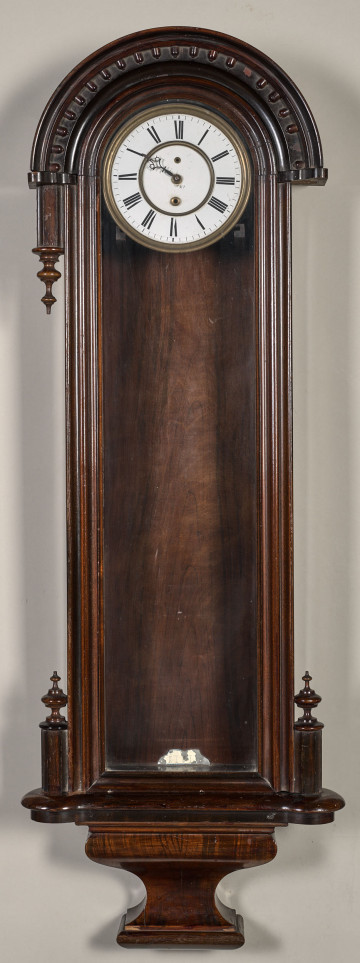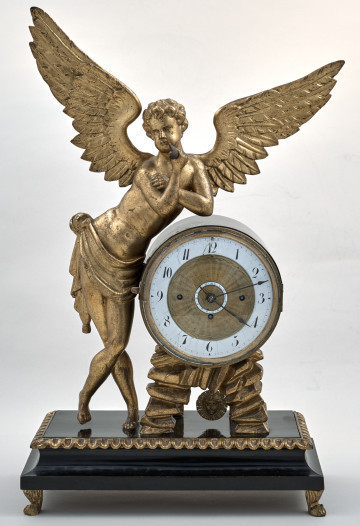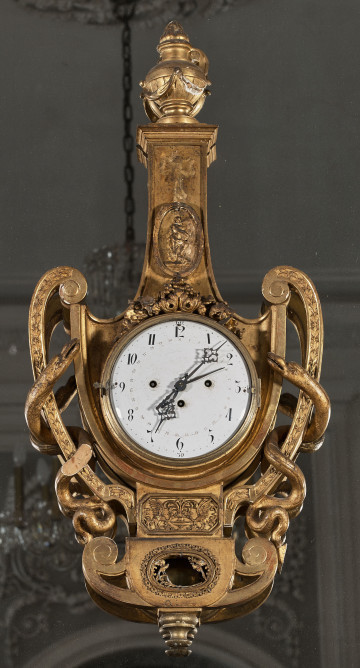
Cabinet clock
19th (?) century
Castle Museum in Łańcut
Part of the collection: Zegary
The origins of skeleton clocks date back to the mid-18th century. The birth place of this type of clocks was France, and with time the became fashionable in England and Austria. The Łańcut piece is an ornamental, standing skeleton clock made in Paris in 1782, by Pierre-Paul Rolland, with five dials made of bronze and chiseled. The inner mechanism was set on a frame and deliberately left uncovered so as to be visible. The round porcelain dials were framed by bronze rings. All lettering is kept in black; the dials show the hours, minutes, seconds, seasons, zodiac signs, months, days of the week, moon phases and days of the month. The entire mechanism was placed on an oval mahogany base supported by four legs. The mechanism is covered by a glass dome, partially cracked, which was intended to protect the construction from dust and at the same time allow observation of the impressive work of the mechanism and admiration of the mastery of its creator. Of all the types of clocks made in the 18th century, skeleton clocks were undoubtedly the most fascinating, especially as they gave astronomical indications in addition to measuring the passing time.
Author / creator
Dimensions
height: 41.5 cm, width: 33 cm
Object type
clocks
Technique
gilding, fine detail finishing
Material
wood, glass, bronze, steel
Creation time / dating
Creation / finding place
Owner
Castle Museum in Łańcut
Identification number
Location / status

19th (?) century
Castle Museum in Łańcut

20th century
Castle Museum in Łańcut

18th century
Castle Museum in Łańcut
DISCOVER this TOPIC
National Museum in Lublin
DISCOVER this PATH
Educational path